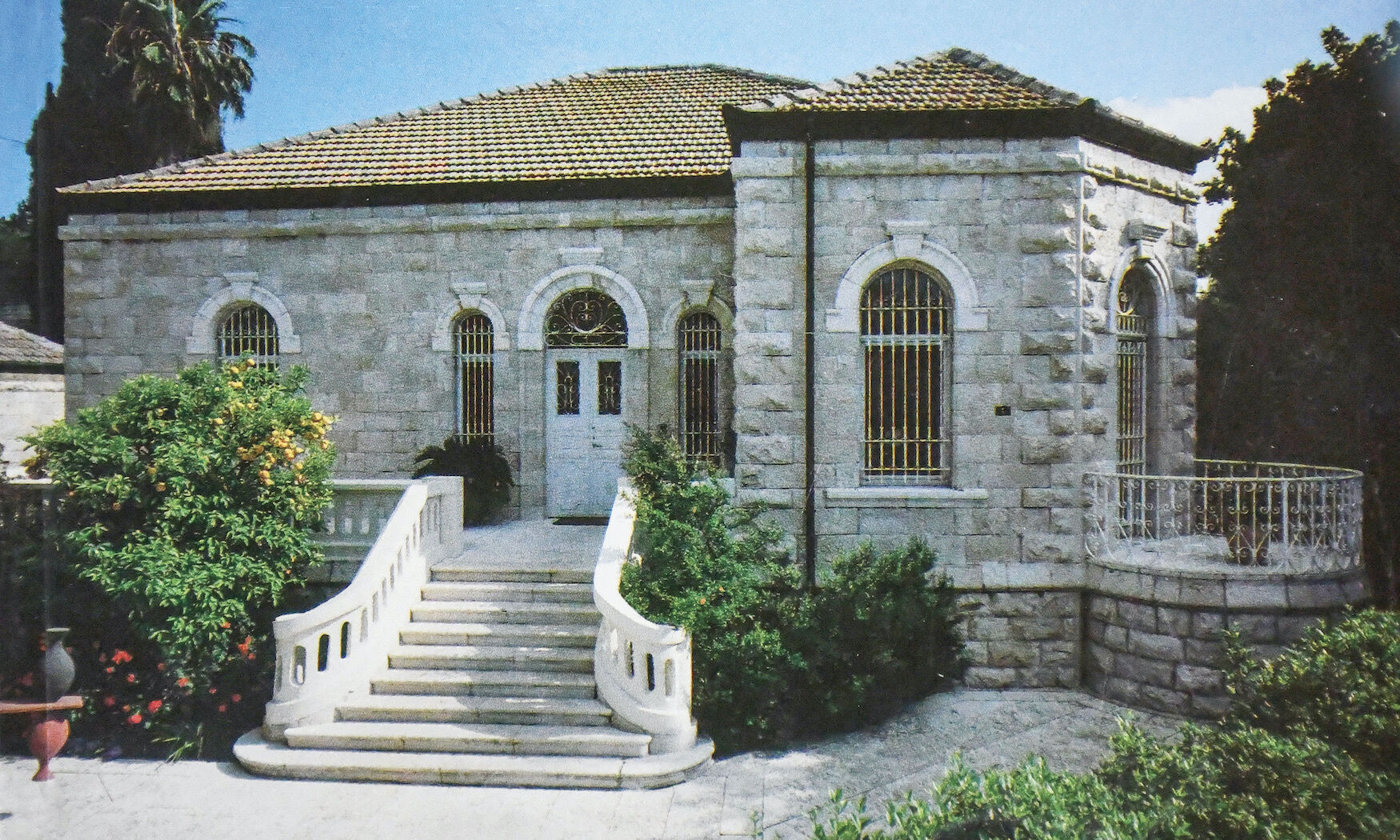The new office of the Armstrong Institute of Biblical Archaeology is situated in the Jerusalem suburb of Talbiyeh. This neighborhood is adorned with mature trees, beautiful flowering gardens and many fine homes and buildings. The area was largely developed in the 1920s and 1930s, mainly by wealthy Christian Arabs who built homes in the Renaissance and Arab styles.
The house, originally called Villa Catana, was built in 1926 by Antonio Catana, a Christian businessman whose family belonged to the local Latin community. Antonio and his family lived in the home until 1948, when they relocated to Beirut.
The villa is built in the Liwan style, which characterizes Arab homes from this period in the Talbiyeh and Katamon neighborhoods. The front of the house is dominated by a wide staircase that leads up to the impressive steel double-doors. Guests approach the staircase via a beautifully landscaped courtyard, one that includes a mature olive tree, pomegranate tree and citrus tree.
In 1948, the home was transferred to the Custodian General of Absentees’ Property. It changed owners many times over the years until it was transferred to Hebrew University in the 1970s. The timing of the university’s acquisition of the building is interesting, as this is when Prof. Benjamin Mazar and Hebrew University formed an “iron-bridge” partnership with Herbert W. Armstrong and Ambassador College.
In 1978, the university sold the building to Canadian businessman Charles Bronfman, who later transferred the property to the Karev Foundation that he founded. The villa was renovated by architects Jeff and Debbie Remez. Two floors were added to the structure: a water cistern became the basement floor, and in 2001, the tile roof was raised slightly for the addition of a second floor.
Together with his wife, Andrea, Bronfman provided enthusiastic and generous support to the Israel Museum, particularly its archaeology department. The Bronfmans were central to the creation of the Samuel Bronfman Biblical and Archaeological Museum, named after Charles’s father. In 1997, the Israel Museum recognized the Bronfmans’ outstanding contributions by making them Honorary Fellows of Israel Museum.
The building was empty from 2014 until July 2022, when it was secured in a long-term lease by the Armstrong Institute of Biblical Archaeology. Immediately after signing the lease agreement, our staff got to work with the aim to restore the building and its gardens to their former beauty. Today, Villa Catana is the home of the Armstrong Institute of Biblical Archaeology.
We invite Let the Stones Speak subscribers to visit us in Jerusalem. To arrange your visit, please e-mail letters@ArmstrongInstitute.org

